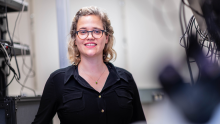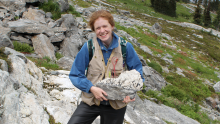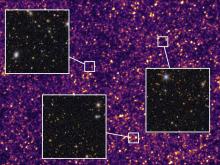UBC researchers have made a major advance in predicting and quashing environmental decoherence, a quantum mechanical phenomena that has proven to be one of the most formidable obstacles standing in the way of quantum computing.
The findings--based on theoretical work conducted at UBC and confirmed by experiments at the University of California Santa Barbara—were published online today in the journal Nature.
"Decoherence helps bridge the quantum universe of the atom and the classical universe of the everyday objects we interact with," says Phil Stamp, UBC Professor of Physics and Astronomy and director of the Pacific Institute of Theoretical Physics. "Our ability to understand everything from the atom to the Big Bang depends on understanding decoherence, and advances in quantum computing depend on our ability to control it."
Quantum mechanics states that matter can be in more than one physical state at the same time--like a coin simultaneous showing heads and tails. In small objects like electrons, physicists have had success in observing and controlling these simultaneous states.
Larger, more complex physical systems appear to be in one consistent physical state because they interact and 'entangle' with other objects in their environment. This entanglement makes these complex objects 'decay' into a single state--a process called decoherence.
"Quantum computing relies on our ability to shield more complex elements like switches from decoherence--so they're capable of being both in the on and off state at the same time," says Stamp. "And for the first time we’ve been able to predict and control all the environmental decoherence mechanisms in a very complex system, in this case a large magnetic molecule."
"Our theory also predicted that we could suppress the decoherence, and push the decoherence rate in the experiment to levels far below the threshold necessary for quantum information processing, by applying high magnetic fields. This worked in the experiment, and fit the theory beautifully. This is an important step in understanding, controlling and ultimately silencing the decoherence that has undermined efforts at quantum information computing."
In the experiment, the researchers prepared a crystalline array of 'Fe-8' molecules in a quantum superposition, where the net magnetization of the molecule was simultaneously oriented up and down. The decay of this superposition by decoherence was then observed in time.
"Magnetic molecules now suddenly appear to have serious potential as candidates for quantum computing hardware," says Susumu Takahashi, Assistant Professor of Chemistry and Physics at the University of Southern California. "This opens up a whole new area of experimental investigation with sizeable potential in applications, as well as for fundamental work."
Takahashi conducted the experiments while with the University of California Santa Barbara and the University of Southern California.
The research was supported by the Natural Sciences and Engineering Research Council of Canada, the Canadian Institute for Advanced Research, the Keck Foundation, and the National Science Foundation.
Musqueam First Nation land acknowledegement
We honour xwməθkwəy̓ əm (Musqueam) on whose ancestral, unceded territory UBC Vancouver is situated. UBC Science is committed to building meaningful relationships with Indigenous peoples so we can advance Reconciliation and ensure traditional ways of knowing enrich our teaching and research.
Learn more: Musqueam First Nation
Faculty of Science
Office of the Dean, Earth Sciences Building2178–2207 Main Mall
Vancouver, BC Canada
V6T 1Z4


